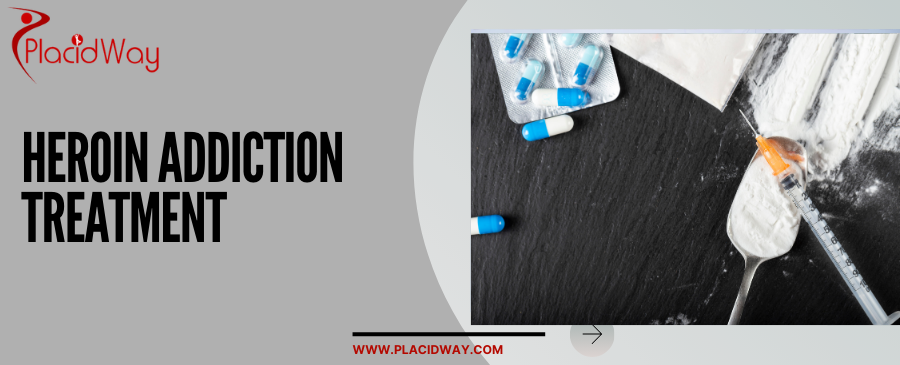
Heroin addiction is a severe and often overwhelming challenge that impacts not only the individual struggling with the addiction but also their families and communities. Known for its highly addictive nature, heroin can quickly take hold of a person’s life, leading to devastating consequences. However, with comprehensive treatment strategies that combine medical care, therapy, and ongoing support, recovery from heroin addiction is achievable.
Heroin is a powerful and illegal opioid drug synthesized from morphine, which is naturally derived from the opium poppy plant. It typically appears as a white or brown powder, or as a black, sticky substance known as black tar heroin. Heroin is usually injected, snorted, or smoked, and it produces an intense, euphoric high by rapidly binding to the brain’s opioid receptors. This intense euphoria is followed by alternating states of alertness and drowsiness, making it highly addictive. The drug’s ability to create such powerful feelings of pleasure is what often leads to repeated use, quickly spiraling into addiction.
|
Prescription Opioid Misuse: Many individuals who become addicted to heroin initially misused prescription opioids, which can lead to heroin use as a cheaper and more accessible alternative. Genetic Predisposition: A family history of addiction can increase the likelihood of developing heroin addiction due to inherited genetic factors. Environmental Influences: Exposure to environments where drug use is common or having peers who use heroin can contribute to the initiation of heroin use. Mental Health Issues: Individuals with untreated mental health conditions such as depression, anxiety, or PTSD may turn to heroin as a form of self-medication. Socioeconomic Factors: Economic hardship, unemployment, and lack of access to healthcare can increase the risk of heroin addiction. |
|
Intense Cravings: A strong and uncontrollable desire to use heroin, often leading to compulsive drug-seeking behavior. Physical Dependence: Experiencing withdrawal symptoms such as nausea, vomiting, muscle pain, and anxiety when not using heroin. Neglecting Responsibilities: A noticeable decline in fulfilling personal, professional, or academic obligations. Risky Behaviors: Engaging in dangerous activities, such as sharing needles or criminal behavior, to obtain heroin. Social Isolation: Withdrawing from family, friends, and social activities as drug use becomes the primary focus of life. Physical Signs: Observable changes such as constricted pupils, flushed skin, slowed breathing, and frequent nodding off. |
|
Methadone: A long-acting opioid agonist that reduces cravings and withdrawal symptoms by acting on the same brain receptors as heroin, without producing the same high. Buprenorphine: A partial opioid agonist that provides relief from withdrawal symptoms and cravings while lowering the risk of misuse compared to full agonists like methadone. Naltrexone: An opioid antagonist that blocks the effects of heroin, helping to prevent relapse by eliminating the rewarding effects of the drug. |
|
Improved Mental Health: Therapy and counseling integrated into treatment can address underlying mental health issues, reducing the need for self-medication with heroin. Enhanced Social Functioning: Recovery allows individuals to rebuild relationships, improve social interactions, and regain their roles in their families and communities. Stabilization of Withdrawal Symptoms: MAT helps to manage the often severe withdrawal symptoms associated with heroin cessation, making the initial recovery phase more bearable. Reduction in Cravings: Medications like methadone and buprenorphine effectively reduce the intense cravings that can lead to relapse. Prevention of Relapse: Naltrexone and other MAT options help prevent relapse by blocking the euphoric effects of heroin, reducing the incentive to use. |
|
Chronic Users: Those who have been using heroin for a long time and are experiencing severe addiction. Individuals with Co-Occurring Disorders: People who have both heroin addiction and mental health issues such as depression, anxiety, or PTSD. Young Adults: Young people who have started using heroin early in life and need intervention to prevent long-term addiction. Relapse-Prone Individuals: Those who have attempted to quit heroin but have relapsed and need additional support and treatment. People Seeking Recovery: Individuals who are motivated to overcome their addiction and are ready to engage in a comprehensive treatment program. |
|
Heroin Addiction Treatment Centers and Doctors Worldwide |
|
|
Heroin Addiction Treatment Packages Worldwide |
|
|
Country |
Average Cost (USD) |
|
Costa Rica |
$8,000 - $16,000 |
|
Mexico |
$7,000 - $15,000 |
|
India |
$6,000 - $13,000 |
|
Cuba |
$6,500 - $14,000 |
|
Realistic Expectations: Understand that recovery is a long-term process and requires ongoing effort even after completing a treatment program. Confidentiality and Privacy: Ensure that the treatment facility has strict confidentiality policies to protect your privacy during the recovery process. Insurance Coverage: Check your insurance policy to understand what is covered and what costs you may need to pay out of pocket. Support Network: Establish a strong support network of family, friends, and possibly support groups to assist you during treatment. Medical Assessment: Undergo a comprehensive medical evaluation to determine the most appropriate treatment plan. Commitment to Recovery: Recovery from heroin addiction requires a strong personal commitment and readiness to engage in the treatment process. Treatment Plan: Be fully informed about your treatment plan, including the medications, therapies, and lifestyle changes that will be involved. |
PlacidWay Medical Tourism connects you with top heroin addiction treatment centers and professionals worldwide, offering the expertise and care you need to overcome addiction. If you or someone you love is struggling with heroin addiction, taking the first step towards recovery is crucial. Book a consultation today to explore your treatment options!